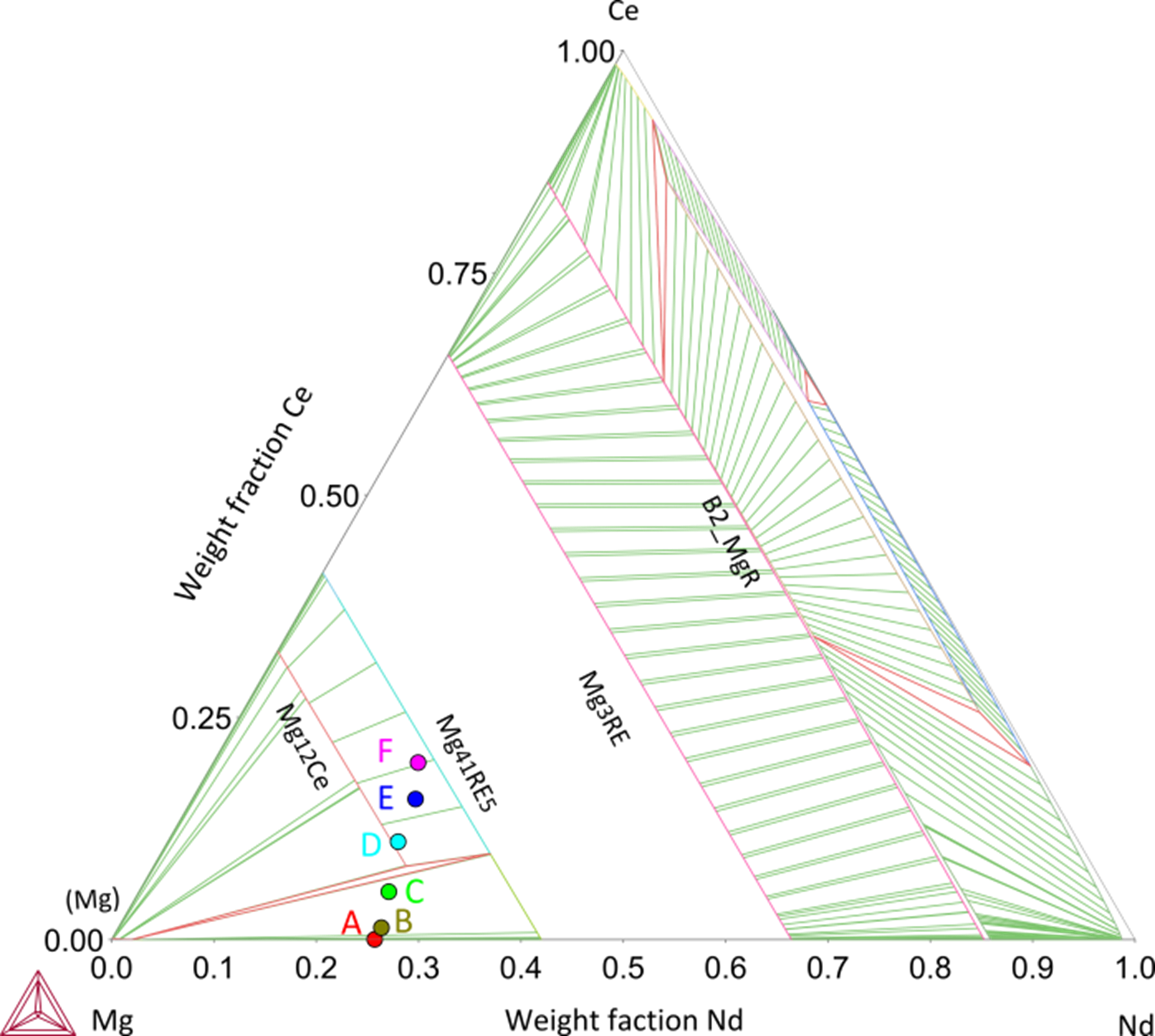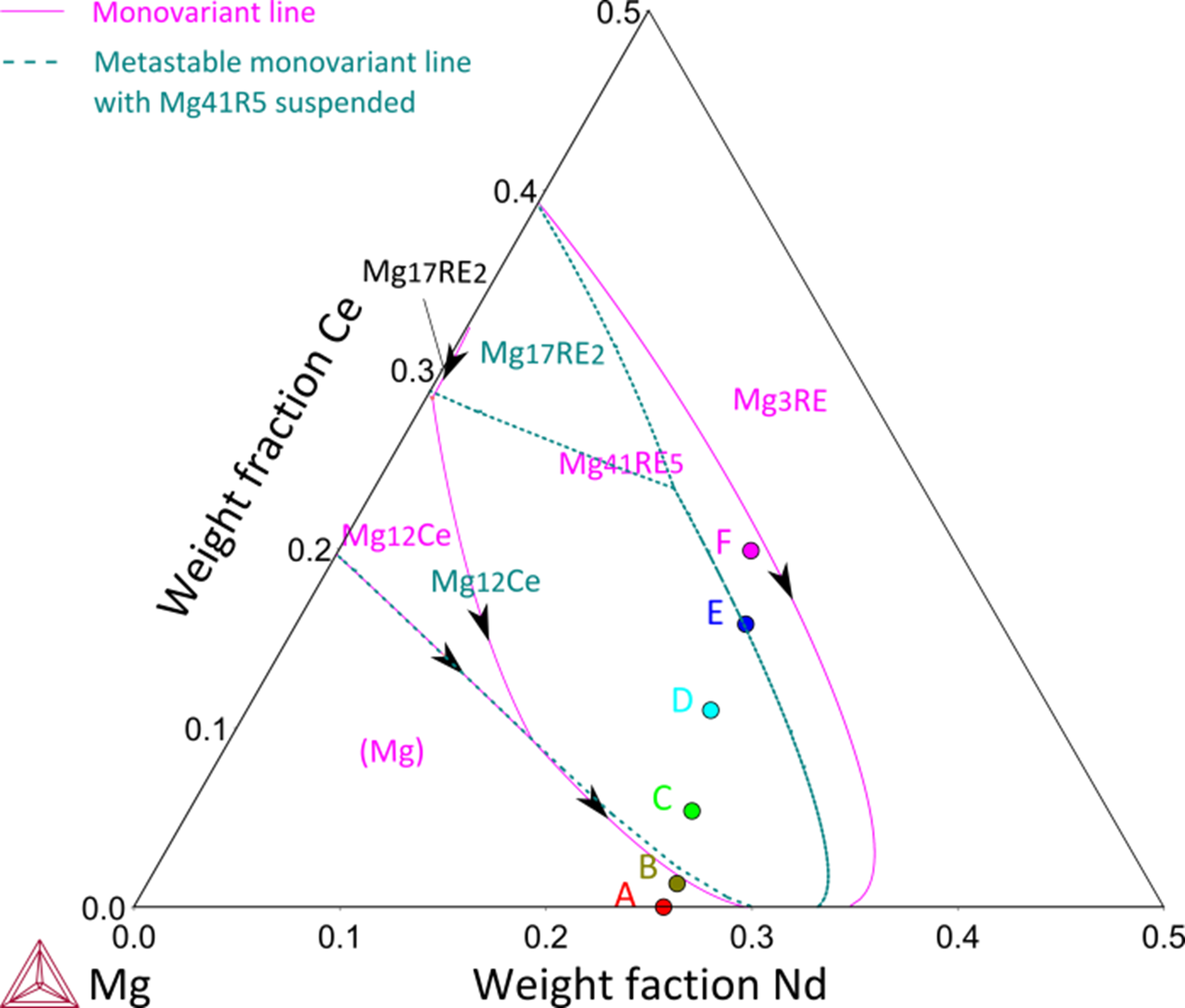Ce-Mg-Nd System
Thermodynamic descriptions of core systems are of fundamental importance to the TCS Mg-based Alloys Database (TCMG). As an example, this section presents the modeling results of a core ternary system, Ce-Mg-Nd.
The modeling highlights the use of experimental data from as-cast alloys, together with those from heated alloys. Heated alloys help to determine the phase equilibria in the system, while as-cast alloys provide information on phase transition during the course of solidification although it is in general more difficult to analyze an as-cast alloy than a heated alloy.
Figure 1 shows calculated Ce-Mg-Nd isothermal section at 773 K. Figure 2 shows a calculated Ce-Mg-Nd liquidus projection, in comparison with phases observed in as-cast alloys.
The phase formation sequences in the six alloy compositions are summarized as follows.
- A and B: (Mg) > Mg12R; C: Mg12R > ?; D: Mg12R +(Mg) ?; E: Mg3R > Mg12R; F: Mg41R5 > Mg12R. The question mark "?" means either uncertain or unknown.
- The phase formation in alloys C, D, and E can be interpreted with the metastable calculation.
Figure 1: Calculated Ce-Mg-Nd isothermal section at 773 K. Heated alloys A, B, and C: (Mg) and Mg41R5; D, E, and F: Mg41R5 and Mg12R.
Reference
[2014Che] H.-L. Chen, Modeling of the Ce-Mg-Nd ternary system in TCMG3, Thermo‑Calc Software (2014).

